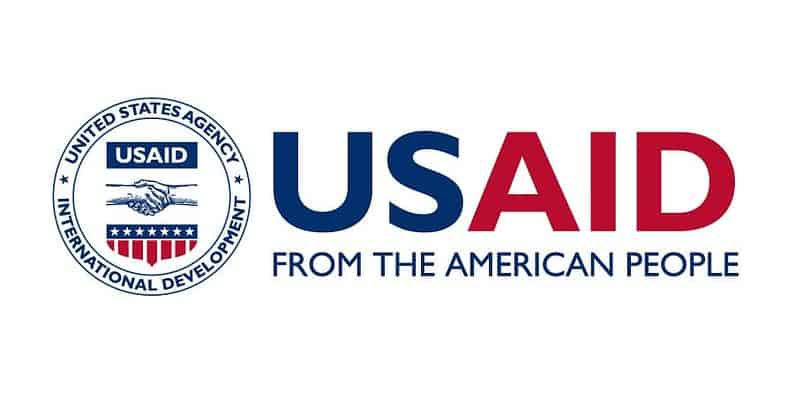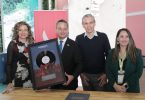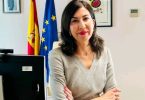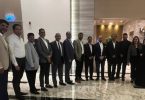HÄRRA. CAPEHART: Alustame suurest pildist. Kuidas ja mil moel mõjutab kliimamuutus naisi ebaproportsionaalselt?
ADMINISTRAATORI VÕIMUS: Noh, kõigepealt lubage mul tänada teid, kes selle ürituse korraldavad.
Ja öelge lihtsalt, et see on minu 10. ÜRO Peaassamblee – ei, minu 11. ÜRO Peaassamblee ja see on esimene kord, kui ma osalen sellisel üritusel, mis on just ajamas paljude probleemide peamist allikat ja lahenduste leidmise vajadust. .
Nii et ma ütleksin kõigepealt, et naised, nagu kõik marginaliseeritud inimesed, kipuvad olema kõik haavatavad elanikkonnad, kliimamuutustest ebaproportsionaalselt mõjutatud. Me näeme seda selle riigi vähemuste kogukondades ikka ja jälle. Me näeme seda mängimas kõikjal maailmas.
Kui vaatate tegelikke hukkunute või surmajuhtumite arvu looduslikes hädaolukordades, näete, et naised ja lapsed kannavad raskust. Ja võite arvata, et oh, see on bioloogiline erinevus ja võib-olla ei suuda nad hiidlaineid või mida iganes ületada.
Kuid see puudutab paljuski soolisi norme ja olgu nii, tunne, et vajate luba, et teada saada, kas võite lahkuda ja jääda kodudesse lõksu. Üldiselt on see, et vastutate perekonna heaolu eest nii palju. Ja jällegi mitte olla võimeline oma heaolu väga esile tõstma.
Näete seda päevast päeva, haavatavust, kui vesi kuivab, ja ma olen just nii paljudes kohtades käinud – olen kindel, et paljud teist on samuti käinud –, kus see on isegi aastast aastasse nii karm, kuidas maastikud on teistsugused kui kümme aastat tagasi. Kuid üks asi pole nii palju muutunud, see on norm, et maakogukondades käivad vett kogumas naised, nii et kui vesi kogukonna lähedal kuivab, peavad naised aina kaugemale kõndima.
Ja see on muidugi olnud kohutav vahend, mille abil naised on pidevalt sattunud soopõhise vägivalla ohvriks. Nii et mida kaugemale lähete, seda vähem kaitset teil on, seda enam, et need muud normid, mis nende näost välja ei paista, näivad olevat nii palju seotud kliimamuutustega per se – norm, mis näitab, et on okei naist rünnata või rünnata. – see norm siis ristub ja tähendab seega jällegi erinevat mõju ka selle sektori naistele.
HÄRRA. CAPEHART: Niisiis, kus maailmas on need probleemid kõige teravamad?
ADMINISTRAATORI VÕIMUS: No on raske valida. Ma annan teile vaid väikese ülevaate oma hiljutisest horisondist või mis iganes horisondi tagurpidi versioon on.
Viimase aasta jooksul reisisin Pakistani, kui kolmandik riigist oli vee all, kuna kombineeriti enneolematuid vihmasid ja liustike sulamist – mis põrkasid korraga kokku – ning puudulik ettevalmistus ja infrastruktuur. Ja jällegi on naised sageli viimased, kes jäävad vara kaitsma, kariloomi kaitsma, kui mehed abi otsivad. Ma mõtlen, et kõik on kohutavalt mõjutatud.
Sealt edasi sõites Põhja-Keeniasse ja Somaaliasse, et näha viit ebaõnnestunud vihmaperioodi järjest. Nii et täielik vastand sellele, mida olin näinud Pakistanis, mis on lihtsalt kuivanud maa. Aafrika Sarvel surid põua tõttu miljonid kariloomad. Võib arvata, et noh, peamine mõju on karjakasvatajatel, kes on loomulikult inimesed, kes kasvatavad karja.
Ja kindlasti, te nägite nende meeste enesetappude arvu suurt hüpet, sest nad olid aastatuhandeid loomi kasvatanud ja ühtäkki hävitati kogu nende kitse- või kaamelikarjad niisama.
Kui aga rääkida mõju peredele ja noortele, eriti alla XNUMX-aastastele lastele, jäänud raskest ägedast alatoitumusest, pidid naised tegelema nii meeleheitliku abikaasaga kui ka küsimusega, mis saab poegadest, kes kujutasin ette, et elustiil jätkub ja mõtleme nüüd äkki: "Kuidas ma neile alternatiivse elu, alternatiivse kutsumuse saaksin anda", kuid on siis ka võimeline püüdma kõige noorematele toitu leida.
Nii et ma mõtlen jällegi, et see tabab erinevates kohtades. Ma olin just, viimane, mida ma teile pakun, on just Fidžil.
Ja loomulikult on see kõigi Vaikse ookeani saarte jaoks – peaaegu kõigi jaoks – eksistentsiaalne oht.
Asi on selles, et terved rahvused peavad mõne aasta pärast välja mõtlema, kuhu nad kolivad, millega nad tegelevad, näiteks, kas nad saavad elada nii madalal asuvates riigi osades, eriti saartel.
Ja vaid väikesed näited kasvavast tööstusest, kus naised on seal.
Sel juhul kohtusin naisega, kellel oli grupp naisi, kes kasvatasid mereviinamarju – mis, muide, on maitsvad.
Ma polnud kunagi varem mereviinamarju söönud. Ja nad olid oma mereviinamarjade üle nii uhked. Ja USAID püüab neid toetada, saada mikrolaenu, et nad saaksid oma äri üles ehitada ja oma äri kasvatada.
Kuid lihtsalt juhuslikult ja see on koht, kus kliimamuutused tulevad igal sammul esile.
Öeldakse, et noh, tänapäeval on ainuke probleem selles, et me peame oma paate aina kaugemale viima, sest ookean soojeneb eriti kalda lähedal, nii et me peame minema kaugemale. Seega läheme mereviinamarjade hankimiseks kaugemale, mis tähendab palju pikemat aega eemal kõigist muudest kohustustest, mis meil naistena majapidamises on.
Lisaks kasutame kütusel töötavaid paate, nii et me paiskame õhku rohkem heitmeid, kui me läheme ja püüame neid mereviinamarju välja tuua, et oma äritegevust kasvatada.
Nii et teate, jällegi, kõikjal, kuhu sa vaatad, Vaikse ookeani saared, Aafrika, Aasia – see on kogukond, mis vajub.
HÄRRA. CAPEHART: Ma tahan jõuda teie mainitud mikrolaenud, ma tahan jõuda abini, mida USAID annab. Kuid kas need probleemid, millest te just räägite, on palju arengumaadest, aga kas see, millest me räägime, piirdub arengumaadega?
ADMINISTRAATORI VÕIMUS: Ei, vaevalt, aga ma lihtsalt juhtun –
HÄRRA. CAPEHART: Seda nimetatakse juhtivaks küsimuseks.
ADMINISTRAATORI VÕIMUS: Me elame, ma mõtlen – ma arvan, et me oleme siin oma kahekümne kolmanda looduskatastroofi juures, mis on praegu USA-s maksma läinud üle ühe miljardi dollari.
Oleme kogenud oma rekordiliselt kuumimat päeva, nädalat ja kuud, ma arvan, et just viimase paari kuu jooksul. Esimest korda pidime meie ellu leviva kulutulesuitsu tõttu sulgema teatud ettevõtted, suvelaagrid ja võimalused noortele.
Ja jällegi erinevad mõjud. See on võib-olla väike näide, aga kui laps ei saa laagrisse minna, on see töötav ema – enamikus leibkondades, kindlasti minu oma –, kes peab välja mõtlema, mis – see on nagu versioon juhtunust. COVID-iga.
Kui kliima tabab, olgu see siis väikestel või põgusatel viisidel, millel on tõsine mõju tervisele ja elustiilile, on selle haldamine kodu multitegumtöötajate ülesanne.
Kuid ma mõtlen, et ka praegu tekitatud kahju rahalisi tagajärgi, mis tunduvad mõnes Ameerika Ühendriikide paigas peaaegu igapäevased, ei saa üle hinnata.
Juhtub lihtsalt see, et USAID ei tööta, sest me teeme oma tööd välismaal.
Ja meie töö, ma ütlen, et üks suurimaid pingeid ja väljakutseid, millega me maadleme, on see, et meile on antud kindlad ressursid ja ressursid, mis ei pea üldse sammu kliimamuutuste põhjustatud tagasilöökidega.
Kuigi nad kasvavad, kasvavad meie ressursid. Aga sa lihtsalt ei suuda sammu pidada. Kuid teine probleem pole ainult see. Asi on selles, et nii suur osa meie ressurssidest läheb inimeste elushoidmiseks hädaolukordades, nagu Liibüas viimase nädala jooksul – või Pakistanis või Somaalias.
Ja mida te ei teeks, on võtta kogu see humanitaarabi ja investeerida selle asemel katastroofidele vastupidavasse infrastruktuuri või põuakindlatesse seemnetesse või väikelaenudesse väiketalunikele, kes on tegelikult võimelised kasutama oma nutitelefoni äärmuslike ilmastikunähtuste ennetamiseks ja vähemalt leevendada neid kaotusi.
Nii et see, mida ma kirjeldasin, on omamoodi erinevus vastupidavuse ja hädaabi vahel. Ja meil on valitsuse ja doonorkogukonnana suur mõju – see on ilus asi, see on ilus privileeg püüda aidata inimestel oma elu halvimatest hetkedest üle elada.
Kuid nii tehes, mis on üsna vaheaeg, teate, et tulete selle juurde tagasi. Ja see on ekstra südantlõhestav.
Kuna vanasti öeldi, et me ütlesime, et kliimašokk, aga nüüd on see selline, et kas see on šokk, kui see on riigi põllumajanduse teatud osa etteaimatav tunnus? Ja mida see meilt siis nõuab?
Kui pirukas oleks suurem, suurendaksime järsult oma investeeringuid vastupidavusse, mida peaksime tegema. Pikaajalise elude päästmise huvides on raske elusid päästmata jätta. Seega tasakaalustame seda nii hästi kui suudame. Kuid see pole lõbus tasakaalustav tegevus.
HÄRRA. CAPEHART: Te aimasite küsimust, mida ma esitasin, hüpates mikrolaenud maha, nii et ma hüppan edasi. Räägime majandusarengu ja kliimamuutuste vahelisest seosest.
Kui tihedalt need probleemid on seotud ja kuidas USAID neid mõlemaid korraga käsitleb?
ADMINISTRAATORI VÕIMUS: Noh, ma mõtlen, ma ütleksin, et me oleme sees või liigume selle poole, lubage mul öelda, et meil on veel pikk tee minna, et kinnistada tähelepanu kliimamuutustele kui kogu meie töö kujunduselemendile.
Nii et üks struktuurne, võib-olla veider näide sellest on see, et oleme võtnud oma toiduga kindlustatuse ja vastupidavuse büroo ja ühendanud selle oma kliimameeskonnaga. Ja see on koht – kuid seos, mis inimestele on üsna ilmne, ei ole täiuslik kattumine, kuid neid on palju – põllumajandus on peamine heitkoguste allikas, nii et need heitkogused peavad vähenema.
Ja loomulikult on kliimaarukas põllumajandus see, kuidas me toiduga kindlustatust säilitame või eelseisvatel aastatel suurendame. Nii et see on üks ühinemine. Kuid hariduse poolest on see number üks. Ma mõtlen, et me kõik, kellel on lapsed, on number üks asi, mida lapsed meie kohta teada tahavad, mitte ainult seda, mis maailmaga juhtub, vaid ka seda, mida ma saan sellega teha?
Isegi kui mõelda haridusele valitsemises – see on niivõrd destabiliseeriv valitsuste jaoks, kes ei suuda kliimamuutustega sammu pidada, olgu siis vastupanuvõime või hädaolukorra poolel, sest see suurendab usalduse kaotust institutsioonide vastu, mida me näeme mitmel pool maailmas.
See ei puuduta ainult jälgimistehnoloogiate eksporti Hiina Rahvavabariigist või demokraatiatest, mida muude vahenditega rünnatakse.
Maailmas juhtub ka asju, millega valitsus ei suuda sammu pidada, lisab see küünilisuse institutsioonide suhtes. Nii et see on pikk tee öelda, et me teeme USAID-s juhtimistööd, tegeleme haridusega, me tegeleme rahvatervisega, mis on täielikult kliimaga seotud.
Kui vaadata malaaria mustrite muutumist, siis ma arvan, et WHO ennustab, et aastaks 250,000 sureb kliima tõttu veel 2030 XNUMX inimest – olgu selleks kuumastress või malaaria või veepuudus, sellest tulenev alatoitumus.
Seega, kuhu me agentuurina peame jõudma, on pöörata tähelepanu vastupanuvõimele ja tähelepanu kliimamuutustele ning sellele, mida see kogukonna jaoks kõiges, mida teeme, tähendab.
In a sense, USAID is a climate agency, even if we still have a climate team that works as a climate team per se, mainstreaming this agenda is what our missions are trying to do all around the world.
And this is not because I anticipate the, you know, the concerns of some maybe in our domestic politics on this – and I’m sure you’ll get there, but this isn’t USAID foisting anything.
This is the cri de coeur for you know, heard all around the world, that this is a game changer. Our development trajectories were going here – COVID hit and now we have what could feel like a COVID-like, not not of the same scale, but battering again and again and again.
So just as we’re now thinking differently about pandemic prevention, what should that lead us to think about when it comes to embedding climate in the mindset of all public spending and all notions of mobilizing, mobilizing private capital, because that’s, of course, going to be a big part of the solution.
So we’re that’s – it’s this mainstreaming and not having climate live over here. But given that it is this game changer and given it’s our host countries and the communities in which we work and of it works. It’s John F. Kennedy’s pleading gives us more of the tools to adapt to this shell-shocking phenomenon.
HÄRRA. CAPEHART: Well, I asked the question about economic development because, with economic development comes perhaps better lives, and better living conditions, which then can exacerbate the issues related to climate change.
So how do you – and I wrote it down really fast – that mainstreaming, how in mainstreaming climate in the things that you do. How do you find that balance between helping people help themselves, while at the same time not doing it in a way that exacerbates the climate problems that we all have to face?
ADMINISTRAATORI VÕIMUS: Yeah, and I mean, I think one example I think that you’re alluding to is, you know, as people get richer, they buy more meat and that causes, you know, more emissions or they travel more, they’re flying more there.
And absolutely, I mean, we’ve seen that the emissions trajectory in both the PRC and India reflected that.
Our emissions trajectory, back as we were bringing our economy online and modernizing, absolutely reflects that. So I think that is profound. I will say the fact that solar power, the cost of solar has come down by 85 percent. The cost of wind is down by 55 percent. Where we work, the demand signal for renewables is very, very significant – which doesn’t get it mediating some of the other features of getting wealthier.
But it does get to the urgency of making clean energy transitions as these prices come down. It is a better bet. And so again, when we have these exchanges on the Hill and it looks to some who are skeptical somehow still of climate programming, you know, that we’re bringing our green agenda to the countries in the communities we’re working in – no, it’s not like that at all.
They’re saying we can’t afford this other thing.
But actually, we can pop up a solar panel and have a water pump that we’ve been trying to get in this village. We can go off the grid in ways we never – where the state is not going to get here any time soon.
This was my experience out in Bekaa Valley in Lebanon, where USAID had worked to, you know, build a bunch of solar panels that powered electricity and ended up actually reducing tension between refugees who were being generously sheltered by Lebanese host communities, Syrian refugees, and the Lebanese.
Because they were no longer fighting over water because they had water because they had solar – but to attach to the grid, no way. And so then those tensions, who knows what would happen with that.
So the idea is that these investments are cost-effective over time, that actually you can develop, along the lines of what you’re describing, in a clean way.
I think the other aspects of consumption need to be dealt with as part of civic education and as part of norm work because it is true that in many, many societies, and again, including our own back in the day, as you increase your livelihoods, your income, consumables are a very attractive way to expand those new resources.
This feels like a high-class problem in most of the countries we’re talking about. I mean, I’m talking about working with small-scale farmers who are paying double this year for fertilizer than they were paying before Putin invaded Ukraine, who just need a little loan to be able to get access to some of those drought-resistant seeds that are going to increase yields by 25 percent.
But again, finding the resources to get them that. Getting the private sector interested in adaptation. But the question that we should be thinking now about, if we can be successful, if we can help them withstand the negative effects of climate change and the like here in America, grow jobs out of also these changes to their economies, then what?
Then we will be grappling with the kinds of things that have further fueled emissions in more recently developed countries.
HÄRRA. CAPEHART: As you alluded to many times, there’s a lot of good news related to the development of clean energy alternatives. That being said, though, global emissions once again hit a record high in 2022, and carbon dioxide in the atmosphere has risen to levels not seen in millions of years. Are we moving in the wrong direction despite glimmers of hope?
ADMINISTRAATORI VÕIMUS: Well, I mean, I think all of us can answer that question in two ways. And we talk to ourselves all day – on the one hand this, and on the other hand that. But what we can say is we’re certainly not moving fast enough. And you know what breaks my heart is, it’s a little bit like another version of the vicious cycle you were kind of describing.
But when you see the wildfires, and the rate of wildfires, and then all of the carbon emitted and all of the good that had been done with carbon emission reductions – and that being not washed away – whatever, smoked away, burned away – that’s heartbreaking because these investments are accelerating.
They are building momentum. So I think that, and that’s not the only thing that’s heartbreaking.
There’s so much that’s happening day to day and a little bit of the despondency, I think, setting in as well – as people just open the newspaper, and whether it’s in their own community or one further afield or even something like what happened in Libya, which just captures the imagination of, which was its own sui generis issue with regard to governance and infrastructure, but would not have happened that way but for the intensity of Storm Daniel, which is just being seen in so many communities.
But what I do think it’s important to come back to, at least as proof of concept, is that in Paris the projections – they were, we the world, were on a track to warm 4 degrees and we are now on a track to warm 2.5 degrees.
So that is a reflection of the agency that people have claimed over this trajectory. The problem is we need to curb warming at 1.5 degrees, but that delta from four to 2.5 should give people at least a sense that actually collectively we are doing things that are making a difference. There’s no doubt we are doing things that are making a difference.
If I could, though, I think the area that we have – I mean, as John Kerry likes to say, if we don’t get mitigation right and the carbon reductions right, there’ll be no planet to adapt. He makes a comment like that a lot.
We, at USAID, are in the mitigation and adaptation business, as is Secretary Kerry and his team. But I think in mitigation, what I think gives one hope is just how much the private sector has leaped in now recognizing that there’s money to be made. And I’d love to rely on people’s good intentions and their feeling of fellow humanity, but it’s much more reliable if they think there’s money to be made.
And that shift has occurred. And you see it in the IRA, which is already defying even the best projections and extrapolations that people did. I mean, this is going to have way more collateral effects and bring down carbon way more, I think, than people could have, just strictly speaking, anticipated because of a cascade now of private sector interest fueled and catalyzed by the underlying legislation.
And so too, as the prices come down again, there’s a virtuous cycle. Adaptation – we’re not we’re not there. And I don’t know if we’re ten years behind where we are on mitigation – where we are on mitigation.
Like it’s the same thing going to happen in ten years where we look back and say, oh, we lost all that time. Why couldn’t private-sector actors have seen as well that there’s good to be done and money to be made?
I guess if you have to think that way around the insurance industry in the agricultural sector, in Fintech, I mean, all these tools are going to be absolutely critical in particularly rural areas and those areas that are most vulnerable to climate change.
But about two percent of funding for adaptation comes from the private sector right now, and that has just got to change.
So President Biden and we have done a big call to action to the private sector, but it’s slow going. And even if you take – forget the specific sectors that have a direct nexus with the need to build resilience – look at it in even more stark terms. The market share that so many companies are hoping to capture is themselves going to have less money to spend, maybe in flight, maybe at war.
And so the positive of that is, hey, if we can help them adapt and be more resilient and where these emergencies happen, but don’t wallop communities in the same way and they bounce back, those are consumers that will be our consumers. But the negative is what if, you know, millions, tens of millions of consumers are taken offline because they are driven into poverty?
The predictions now are that 100 million more people driven into extreme poverty by 2030. But that’s within our hand, that adaptation. There’s so much less to, as I would say to my kids, there’s room to grow.
The areas that are the most troubling in some ways, there’s really room to grow. And you could see a cascade of the kind that we’ve seen on carbon mitigation.
HÄRRA. CAPEHART: Administrator Power, we got a minute and eight seconds and this will be the final question. The name of this conference is This is Climate: Women Leading the Charge. So how do you see women reshaping climate leadership?
ADMINISTRAATORI VÕIMUS: We, USAID, and Amazon, the company, not the forest, launched a gender equality fund, a gender equity fund at COP, and we launched it with $6 million in funding. And this is for women.
It’s for projects that will benefit women, it’s for projects that are driven by women in adaptation or in mitigation – the whole or the protection of natural ecosystems – but things broadly in the climate space.
And today we have the Visa Foundation and Reckitt, a company out of the United Kingdom, who have joined us and matched that initial – USAID put in $3 million, Amazon put in $3 million, and have added $6 million.
Why do I mention this? It’s not a huge amount of money yet. We are going to get up to $60 million, we hope, in rapid order.
This is part of another cascade that we would like to see. We’ve put out a request for proposals, incredible women leaders are putting proposals in.
These can be small projects. A lot of the climate finance right now is not going to small projects, it’s going to big international organizations. So working more with local partners is going to be absolutely key.
But these are going to be the success stories that are going to inspire people to invest more and to believe that change can come. And sadly, there are just not that many examples of climate finance facilities that are targeted and tailored toward women, even though women are bearing the greatest brunt.
And women, I think, in my experience, are doing the most innovative work in dealing with the consequences of climate change and trying to lower those consequences in the years ahead.
HÄRRA. CAPEHART: Samantha Power, the 19th Administrator of USAID, thank you very much for joining us today.
ADMINISTRAATORI VÕIMUS: Thanks, Jonathan.
What is USAID?
USAID stands for the United States Agency for International Development. It is an independent agency of the United States federal government that is primarily responsible for administering civilian foreign aid and development assistance. USAID’s mission is to promote economic and social development in countries around the world, with a particular focus on reducing poverty, promoting democracy, and addressing global challenges such as public health crises, environmental sustainability, and humanitarian crises.
Some of the key functions and activities of USAID include:
- Providing humanitarian assistance: USAID responds to natural disasters, conflicts, and other emergencies by providing humanitarian aid, including food, shelter, and medical supplies, to affected populations.
- Promoting economic development: USAID works to stimulate economic growth in developing countries by supporting projects and programs that create jobs, improve infrastructure, and foster private sector development.
- Supporting democracy and governance: USAID promotes democratic governance by providing technical assistance and support for fair and transparent elections, strengthening civil society organizations, and advocating for human rights and the rule of law.
- Advancing global health: USAID plays a crucial role in global health initiatives, including efforts to combat infectious diseases like HIV/AIDS, malaria, and COVID-19. It supports healthcare systems strengthening, family planning, and maternal and child health programs.
- Environmental sustainability: USAID works to address environmental challenges, including climate change and natural resource management, through projects that promote conservation, renewable energy, and sustainable agriculture.
- Education and capacity building: USAID invests in education and capacity-building programs to enhance the skills and knowledge of individuals and institutions in developing countries, thereby contributing to long-term development.
- Food security and agriculture: USAID supports programs aimed at improving food security, increasing agricultural productivity, and reducing hunger and malnutrition in vulnerable populations.
USAID operates in partnership with governments, non-governmental organizations, international organizations, and other stakeholders to achieve its development goals. It is often involved in projects and initiatives that aim to alleviate poverty, promote stability, and enhance the well-being of people in countries where it operates. The agency’s work is guided by the foreign policy objectives of the United States and the broader goal of fostering global development and progress.























